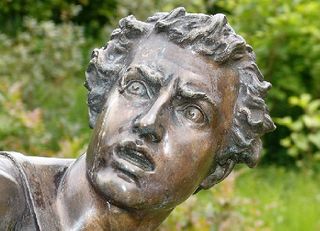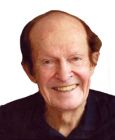
Brad, a 23-year-old political science major at a prestigious university and not focused on his studies, was referred by his father for depression. At our first session, I asked Brad what he did for fun. He said he liked all kinds of vacation sports—scuba-diving off Colombia, tobogganing at Lake Placid, and rafting down the Colorado rapids.
I replied that sounds great, but what did he do around campus. Brad said he liked to party and get drunk with his friends. I asked if he drank when scuba-diving, tobogganing, or rafting. No, Brad said, only after, when experiencing the let-down.
I asked what he experienced when he was scuba-diving, tobogganing, and rafting. Brad said it was the thrill. Anything more, I asked. Brad said yes, it was a feeling of conquest. Conquest of what, I asked. Brad hesitated and answered, “Conquest of fear.”
“You mean that you have to keep conquering the same fear?” I asked.
Brad said yes, but that the enduring part of the experience was that he could face down fear, even if the fear always came back. “You mean that each conquest gives you more breathing space by pushing the fear back, but the fear never goes completely away,”
“You got it," Brad said.
I told Brad he was not alone, that many men, particularly high-risk takers such as policemen, firemen, and those in the military, often were possessed by fear, but decided to fight rather than run from it. I related having asked a friend who had joined the police force years earlier what he got from his job. He answered, “You’ll never know what a rush it is to run up to a house, kick open the door, and yell, ‘Come out with your hands up.’” Brad responded yes, that would definitely score a ten.
I said that the one thing that thrill-seekers had in common was the high they got at the moment of survival, after being exposed to death. When the free-falling parachutist pulls the ring, the moment comes after the long wait, when suddenly the parachute pops open. For the speeding turnpike driver, cutting in and out of traffic at 80 miles an hour, the moment comes as he swerves from hitting another car, just missing certain death. This momentary high of sudden survival was not just a feeling of invincibility, but immortality.
Brad eyes were fixed, staring straight ahead, and he didn’t respond. I then suggested that he could either continue to pursue the high-risk road or fight his fear by aggressively pursuing a political science career, or possibly that of a political analyst, to better understand the part that fear plays in politics.
With a deep sigh of relief, Brad smiled and answered, “I’ll take the low road.”
In looking at the broader picture, I think that many mental health professionals recognize irrational fears are at the root of excessive anxiety, self-destructive behavior, and depressed feelings. At the same time they believe that these irrational fears can be overturned by reason. I am of the opinion, however, that our emotions, such as fear, hate, love, etc., exist in a separate realm and are not subject to reason.
Simply put, we have two memory systems, the declarative and emotional, which operate independently. Declarative memories are stored in the hippocampus, and emotional memories in the amygdala. Hippocampal memories are accessible to consciousness and reason, whereas emotional memories, particularly those attributed to early childhood, reside in the amygdala, largely out of consciousness. Consequently, it is difficult, often impossible, for early traumatic memories laid down in the amygdala to be modified by psychotherapy strategies based upon reason.
Mental illness, from this view, can be seen as a conflict between declarative and emotional memories. For example, men may declare love for their fathers, but also hold unresolved fear and rage carried over from early childhood. To maintain some sort of individual equilibrium, this childhood fear is often siphoned off into high-risk behaviors or transferred into wrath toward outsiders. When buried within, this conflict can lead to a multitude of self-destructive behaviors, including suicide.
Rather than attempt to inject reason into the emotional realm or place the emotional realm under rational scrutiny, an alternate approach is to formulate a three-part therapeutic model which distinguishes these two realms. The rational realm can be subdivided in two conflicting characteristics—self-determination and conformity to the views of powerful others. The emotional realm, given its disposition for uninhibited expression, is at perpetual odds with the righteousness of those holding power, yet can be compatible with reasonable self-determination.
Mental health with this model is aligning the emotional realm with our rational desire for self-determination, thereby minimizing the need for abiding by the dictums of powerful others. In this context, freedom and fear, even of death, cannot co-exist.
A PowerPoint presentation of this three-part therapeutic model is available at no cost by contacting mace@psychresilience.com




